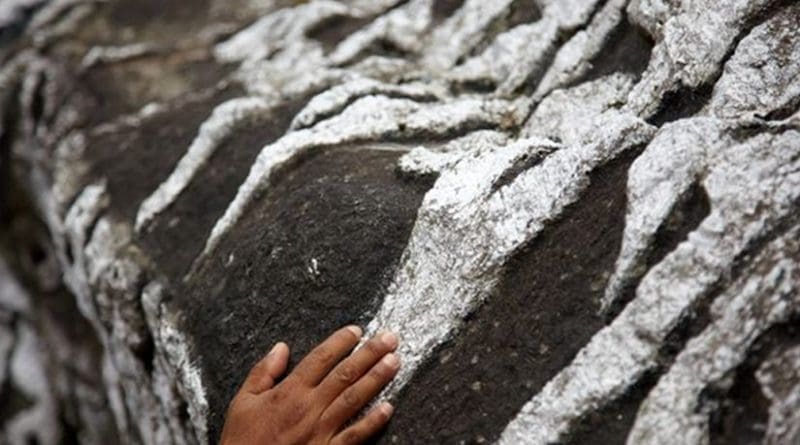Nepal’s Constitutional Questions And Madhesi Aspirations – Analysis
By IPCS
By Pramod Jaiswal*
For the past four months, the Madhesis, people from the southern plains of Nepal, have been conducting a ‘non-cooperation movement’ against Nepal’s ‘non-inclusive’ newly promulgated constitution. They have blocked the entry of fuel and other essential supplies to Kathmandu, which has incited anti-India and anti-Madhes sentiments among the hill people, stoked by high-pitched political propaganda. Set on this premise, this article seeks to examine the problems with the new constitution and the demands of the agitating parties. It also attempts to explore possible solutions to the issue.
Fault-lines in New Constitution
Nepal’s new constitution has highly disappointed the Madhesis, Tharus, women, Janajatis and other marginalised communities such as the Dalits and Muslims. Madhesis and Tharus, who comprise one-third of the country’s total population, are enraged and are on the streets carrying out protests, which have claimed over 50 lives so far.
The new constitution has been severely criticised for failing to address the legitimate rights of the people and not following proper procedures. Though the constitution was formally approved by an overwhelming majority of the Constituent Assembly (CA), in reality, it was the outcome of exclusive efforts by a small group of five influential leaders each of the three major political parties – the Nepali Congress (NC), the Communist Party of Nepal-Unified Marxist-Leninist (CPN-UML), and the Unified Communist Party of Nepal (Maoist) (UCPN-Maoist). Barring one leader – who belongs to the hill Janajati community – all the aforementioned leaders come from the dominant hill upper caste Brahmin/Chhetri communities. Therefore, not a single influential Madhesi and Janajati CA member from the major political parties has publicly defended the new Constitution.
The Constitution failed to follow the appropriate procedure as well. It hurriedly prepared through fast-track mechanisms, without consulting all the 601 members. CA members had to either abide by their party’s diktat or face the risk of strict disciplinary action that also included the risk of expulsion from the party. What is most striking is that the NC, one of the architects of the Constitution, decided to table the amendment for proportionate representation two weeks before the constitution was to be passed. It is also worthwhile to note that the UCPN-Maoist and other parties allowed the Constitution to be passed by formally registering their dissenting opinion on several provisions of the new Constitution.
Women, who constitute over half of Nepal’s population, were also on the streets protesting against the discriminatory citizenship clause. Unlike in the interim Constitution, the new Constitution does not accord equal citizenship rights to Nepali women marrying foreigners, in comparison to Nepali men marrying foreigners.
Similarly, Janajatis, who also consist of one-third of the total population, too were unhappy because their demand for proportional and inclusive representation, identity-based federalism, etc., were not accommodated in the new constitution.
The Madhes Question
The current uprising in Madhes is a result of non-implementation of the past agreements signed between the government of Nepal and the Madhesi parties in 2007 and 2008, while drafting the country’s new Constitution. Although some aspects of the past agreements have been included in the new Constitution, the four core issues – electoral constituencies based on population, proportional representation of Madhesis in government bodies, autonomous identity-based provincial demarcation, and equal citizenship provisions for Nepali women marrying foreigners – have not been not incorporated.
The Madhes uprising began with a two day long nationwide strike enforced by the 33-party alliance, which was later continued by the UDMF. It was a spontaneous people-led movement with overwhelming participation. Unlike the previous Madhes movements, surprisingly, the current one has gathered strong support from Madhes’ hill communities. However, the incumbent government has made various attempts to suppress the movement via the use of brute force. The attempt to mobilise the Nepal Army failed after the Chief of Army Staff refused to act during the meeting that was also attended by the defence minister. The government is yet to renounce its current stand, which clearly shows that it lacks seriousness in addressing the demands of the protesters.
Way Forward
The government needs to engage the allies, make its stand clear and urgently resolve the ongoing crisis through dialogue. If the legitimate demands of Madhesis are not addressed via peaceful means, it is likely to have three possible consequences: one, the loss of faith in the non-violent movement would radicalise the Madhesi youth and they could direct their energies towards armed action; two, the separatists’ agenda will gain traction, leading to the demand for a separate nation instead of an autonomous province as it stands now; and three, the evolution of communal violence between the hill people and the Madhesis.
The government can resolve the crisis by adopting the previously agreed provisions in the new Constitution. On the issue of boundary demarcation, one probable solution is to remove the hill districts and include Kailali and Kanchanpur to province number 5. Similarly, the Madhesi populated area of Sunsari, Morang and Jhapa can be included in province number 2.
However, this solution would face strong resentment from influential leaders like Ser Bahadur Deuba, Bhim Rawal, Krishna Prasad Sitaula and KP Oli, as they have their constituencies in those districts. Hence, they should be taken into confidence by the Madhesi parties.
*Pramod Jaiswal
Senior Research Officer, IReS, IPCS

